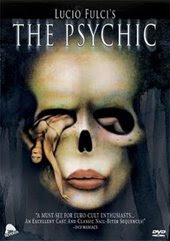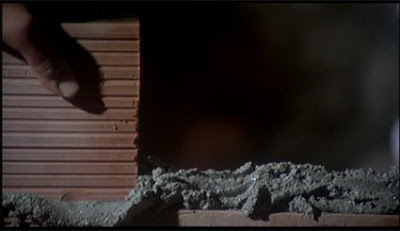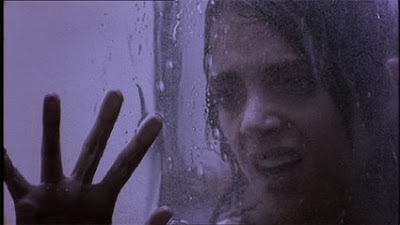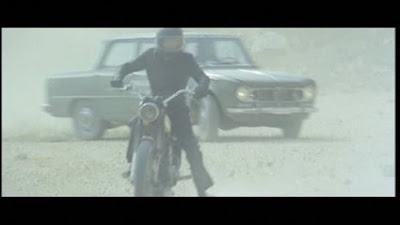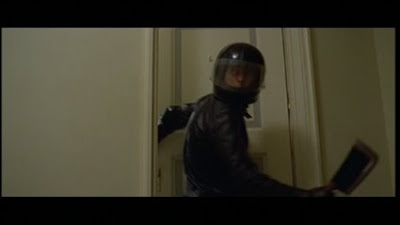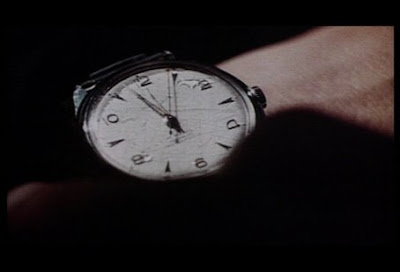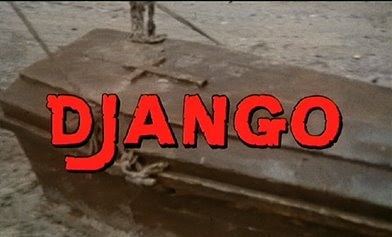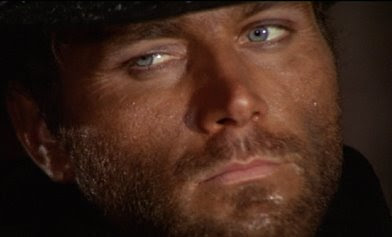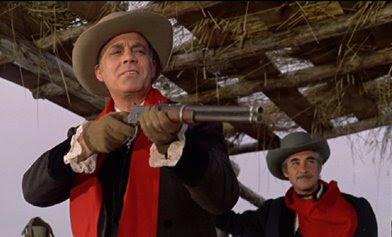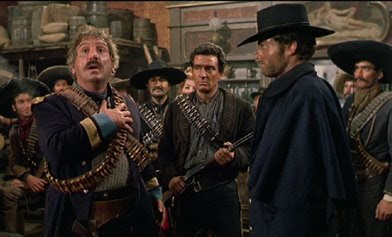

Paperhouse
Directed by: Bernard Rose
UK, 1988
Horror/Drama, 89min
Distributed by: Lionsgate
Story:
Young Anna Maddon, starts having strange dreams during fainting spells. In these dreams she finds herself walking an imaginary world that she has drawn in one of her notebooks. After a while characters from her drawing start turning up in her dreams and several inverted reflections of the real world start to become apparent in the dream world. But when anger towards her father’s absence starts to enter the dream world they take on nightmarish proportions.
 Me:
Me: Here’s one of those movies that I often have referred to as a forgotten British horror gem, but now, after re-watching it, I have really mixed feelings about. So much that I contemplated dropping it from the pile of stuff to be reviewed as the end credits rolled on screen. On one hand I remember it as a very scary and effective movie and brought more than a decade of respect for the movie with me to the couch before enjoying a dear reunion with Bernard Rose’s Paperhouse. But after seeing the movie again I had the churning feeling that it’s really only a pretty silly and tedious piece of confusing junk. Well the silly/tedious/confusing junk bit goes on for ever during the last fifteen minutes of the movie, and that’s probably why I completely had forgotten about it, because there are a few really good scares here, some fabulous moments of fear, an intriguing plot and a great pre-adolescent love story underneath all the parallel world dream/nightmare stuff. It’s funny how fifteen years of space between viewings can warp your impression of a movie.
Anna [Charlotte Burke, who never starred in anymore movies, but did win the Best Actress award at the Spanish Fantasporto festival in 1989 for her part in Paperhouse] starts having fainting spells where she awakens in a dream world that reassembles the drawing she drew during the opening titles. Anna passes out during a game of hide-and-seek and can’t be found for several hours, her Mother [Glenne Headly] is worried sick, and Anna’s father is away with his work. The police find her and the family doctor, Dr. Sarah [Gemma Jones who apart from playing Bridget Jones mum, and Madam Pomfrey in the Harry Potter movies also played Mrs. Folder in Jaume Balagueró’s Fragile 2005] orders Anna to a few days rest. She also tells Anna about another patient she is treating, a little boy in Anna’s age, who also is bedridden. Anna draws the boy into her drawing and he, obviously turns up in her dream world but he’s disabled and unable to walk. Marc [the late Elliot Spiers, who only ever did one more movie apart from Paperhouse, Taxandria 1994, which also features a nearby lighthouse on the seaside] The two children start a platonic relationship in the dream world that eventually leads up to an innocent kiss. That’s when Anna’s father [Ben Cross] appears in her dream and he’s not the loving parent that you may think, but rather the opposite as he wielding a hammer, chases Anna round the paper house, screaming that he will find her and punish her. Anna and Marc destroy the threatening father, but their action which takes place both in the dream world and in reality ends up with Anna being put in hospital. As she awakens in the real world her real father is there, full of remorse for having spent such a long time away from home. Anna also learns of the real world Marc dying. Together the family goes on holiday and in one last confused state of reality and dream Anna and Marc take their goodbyes and Anna moves on into adolescence.
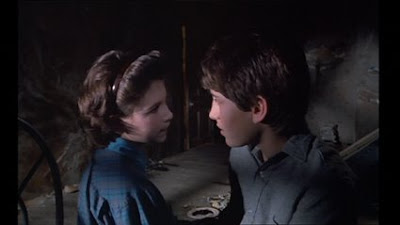 Now how do you go about this movie? It’s difficult to place it in a determined slot as it mixes several genres and styles together throughout the course of the movie. Is it a coming of age drama, is it a horror, is it a fantasy or is it an art house movie? Well it’s difficult to pigeon hole it because it does move between a varied assortment of styles, and more than once I found myself thinking of last years Let the Right One In which also, more or less, is an adolescent drama with horror themes. Such is the case with Paperhouse. An adolescent drama with horror and fantasy themes to give a deeper dimension to the narrative.
Now how do you go about this movie? It’s difficult to place it in a determined slot as it mixes several genres and styles together throughout the course of the movie. Is it a coming of age drama, is it a horror, is it a fantasy or is it an art house movie? Well it’s difficult to pigeon hole it because it does move between a varied assortment of styles, and more than once I found myself thinking of last years Let the Right One In which also, more or less, is an adolescent drama with horror themes. Such is the case with Paperhouse. An adolescent drama with horror and fantasy themes to give a deeper dimension to the narrative. Right from the start there’s great character establishment being made as we rapidly become fond of Anna. We know that she has a fair amount of skin on her nose as she talks back to the fatty bully type in class and yanks away her desk causing the bully to crash into the floor. Her teacher punishes her and sends her into the hallway. Anna stays on making faces at the bully. When her teacher further reprimands her, giving her a detention despite the fact that Anna tells her it’s her birthday. Anna complains that she feels dizzy and the teacher ignores her until it’s too late and Anna passes out in the hallway. Anna’s mom picks her up at school and at first is affectionate, but later is disappointed as Anna claims to have faked her fainting spell (although we know it was for real) and drives her back to school. Anna becomes humiliated and worried what her friends will say when they see that she’s been enforced back to school. All of this is valuable material because it establishes Anna, her mother, their current living situation, and it creates empathy for Anna. It’s little innocent Anna against the classmates, pre-teens and adults which generates emotions that we can relate to, something that we are going to need if we are going to give a damn about this kid during the rest of the movie, and a child protagonist really does wonders for a horror movie if you manage to create that empathy.
Right from the start there’s great character establishment being made as we rapidly become fond of Anna. We know that she has a fair amount of skin on her nose as she talks back to the fatty bully type in class and yanks away her desk causing the bully to crash into the floor. Her teacher punishes her and sends her into the hallway. Anna stays on making faces at the bully. When her teacher further reprimands her, giving her a detention despite the fact that Anna tells her it’s her birthday. Anna complains that she feels dizzy and the teacher ignores her until it’s too late and Anna passes out in the hallway. Anna’s mom picks her up at school and at first is affectionate, but later is disappointed as Anna claims to have faked her fainting spell (although we know it was for real) and drives her back to school. Anna becomes humiliated and worried what her friends will say when they see that she’s been enforced back to school. All of this is valuable material because it establishes Anna, her mother, their current living situation, and it creates empathy for Anna. It’s little innocent Anna against the classmates, pre-teens and adults which generates emotions that we can relate to, something that we are going to need if we are going to give a damn about this kid during the rest of the movie, and a child protagonist really does wonders for a horror movie if you manage to create that empathy.Anna is just coming into her teens, she’s just on the threshold of puberty and still innocent, boys are “yucky” and she’s still just a little girl. This is nicely portrayed in the scene during the start of the movie as she and friend Karen [Sarah Newbold, who never starred in anything else either] spend some time after school putting on makeup and talking about the party Karen recently went too. The differences in the way they wear their school clothing and act towards each other gives away that Anna is a few steps behind her friend on the journey into puberty. Karen has her skirt hitched high, her socks rolled down, Anna’s skirt is hug low almost to her knees, where her socks are rolled up almost a few inches away from her skirt hem. Karen applies a modest amount of makeup, where as Anna naively paints it on in the way a child would. Karen talks about going to parties and snogging with loads of boys, Anna listens with an almost disgusted look on her face before asking her friend if they should play hide-and-seek. “I’m too old for that game now…” her friend replies. This indicated that Anna is somewhat behind her friends as they are maturing faster than her, hence leaving Anna behind. This is one of two reasons why Anna escapes into her imagined world and meets Marc… the first boy who isn’t “yucky”.
 Daddy is the monster in the dream world, and this is also part of growing up and exploring the values of one’s parents, re-evaluating there importance that every child does as they enter puberty. The breaking of paternal bonds, making new friends outside the comfort of the family and becoming an individual. Two main factors add up the fuel behind Anna’s sudden despite for Daddy. He’s obviously got problems with his drinks, as Anna and her mother Kate talk about daddy being drunk, and that he was drunk in the photo Anna holds most dear, which obviously flips the value that the photograph has for Anna and she in a blink of an eye despises the photograph. Secondly, he’s never there. His work has him constantly on the road, and away from home, which also adds to fuel Anna’s sudden hatred. A hatred that she dare not speak aloud, but is confronted in her dreams. Also there is definitely something going on there worthy of some psychoanalysis as her father shows up and wants to beat her to death just after she receives her first, but still innocent kiss. Her affections have shifted from her father to the young boy.
Daddy is the monster in the dream world, and this is also part of growing up and exploring the values of one’s parents, re-evaluating there importance that every child does as they enter puberty. The breaking of paternal bonds, making new friends outside the comfort of the family and becoming an individual. Two main factors add up the fuel behind Anna’s sudden despite for Daddy. He’s obviously got problems with his drinks, as Anna and her mother Kate talk about daddy being drunk, and that he was drunk in the photo Anna holds most dear, which obviously flips the value that the photograph has for Anna and she in a blink of an eye despises the photograph. Secondly, he’s never there. His work has him constantly on the road, and away from home, which also adds to fuel Anna’s sudden hatred. A hatred that she dare not speak aloud, but is confronted in her dreams. Also there is definitely something going on there worthy of some psychoanalysis as her father shows up and wants to beat her to death just after she receives her first, but still innocent kiss. Her affections have shifted from her father to the young boy.On a more sinister note, Ben Cross plays the father so disturbingly that I keep getting a creepy feeling that there’s an unwritten child molestation story going on somewhere in here. There’s nothing to validate this feeling, it’s just there. The almost apologetic way he approaches Anna, the distance between them. There is definitely something in the backstory that never is presented, but brings a really distressing atmosphere to the scenes with Anna and her father.
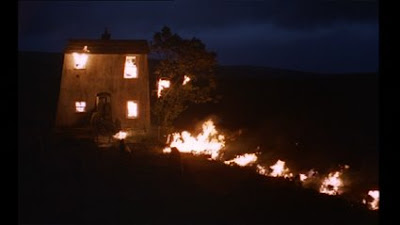 The ending is still rather tedious there’s no getting around that, because it goes on a bit too long without anything really happening until Anna spots the lighthouse at the seaside where she and Marc spent their last dream together. Throughout the movie, the dream world and real world are reflected in each other. To start with, they are fantasy reproductions of that what Anna puts in her drawing, but gradually they become negative projections of the real world. When Marc is getting better in the real world, he grows ill in the dream world and vice-versa. So at the end of the movie, when Marc can walk (he even runs), and flies away in the helicopter he drew in his reality, we understand that he has died. Then there’s that final scene on the end of the cliff here dream and reality once again crossover into each other. In the dream world Marc has promised to obtain a helicopter so that he and Anna can fly down to the beach. A promise Anna made to him early on was that they would leave the house and walk the beach. Anna stands on the cliffs as the helicopter appears, but instead of urging her on, Marc tells her to step away from the cliffs and ignore the ladder that she is reaching for. In the last possible moment Anna’s mom grabs her and she falls back over onto the safety of the ground as the helicopter flies away. Credits roll on the hugging family. It’s confusing and silly, but an if you want, you could say that it’s a closure of the childlike dream world Anna has been in, her age of innocence, and as she fails to grab the ladder (metaphorically the stairway to heaven as the fall off the cliffs would undoubtedly be her death.) she puts all her childhood (i.e. fantasies, dream worlds etc.) behind her and takes her first step towards growing up.
The ending is still rather tedious there’s no getting around that, because it goes on a bit too long without anything really happening until Anna spots the lighthouse at the seaside where she and Marc spent their last dream together. Throughout the movie, the dream world and real world are reflected in each other. To start with, they are fantasy reproductions of that what Anna puts in her drawing, but gradually they become negative projections of the real world. When Marc is getting better in the real world, he grows ill in the dream world and vice-versa. So at the end of the movie, when Marc can walk (he even runs), and flies away in the helicopter he drew in his reality, we understand that he has died. Then there’s that final scene on the end of the cliff here dream and reality once again crossover into each other. In the dream world Marc has promised to obtain a helicopter so that he and Anna can fly down to the beach. A promise Anna made to him early on was that they would leave the house and walk the beach. Anna stands on the cliffs as the helicopter appears, but instead of urging her on, Marc tells her to step away from the cliffs and ignore the ladder that she is reaching for. In the last possible moment Anna’s mom grabs her and she falls back over onto the safety of the ground as the helicopter flies away. Credits roll on the hugging family. It’s confusing and silly, but an if you want, you could say that it’s a closure of the childlike dream world Anna has been in, her age of innocence, and as she fails to grab the ladder (metaphorically the stairway to heaven as the fall off the cliffs would undoubtedly be her death.) she puts all her childhood (i.e. fantasies, dream worlds etc.) behind her and takes her first step towards growing up. The production design by Gemma Jackson is fabulous, those sets of the dream world are awesome and really look like the paper drawings that Anna has done, and the darker and dirtier the drawing gets, the darker the sets get it’s impressive to say the least, especially all those items that only have two dimensions in the drawing but have three dimensions in the dream world. It’s really original and well done. In 2005 Jackson was nominated for a Best Achievement in Art Direction Oscar for her work on Marc Forster’s Finding Neverland.
The production design by Gemma Jackson is fabulous, those sets of the dream world are awesome and really look like the paper drawings that Anna has done, and the darker and dirtier the drawing gets, the darker the sets get it’s impressive to say the least, especially all those items that only have two dimensions in the drawing but have three dimensions in the dream world. It’s really original and well done. In 2005 Jackson was nominated for a Best Achievement in Art Direction Oscar for her work on Marc Forster’s Finding Neverland.The movie also features a wonderfully haunting but rather mysterious soundtrack by Stanley Myers, who scored several of UK Horror/exploitation king Pete Walker's movies and several John Hough movies too. The score to Paperhouse was co-written with a young Hans Zimmer who together with Myers had founded the Lille Yard Recording studios in the early eighties, where Myers and Zimmer had been combining the potent sound of a full orchestra with state of the art electronics. Paperhouse is a great example of this, where the score elegantly combines childlike pling plong keys that flow over into dark brooding drones with a touch of bombastic orchestral pomp much in the trademark style that Zimmer would later become infamous for.
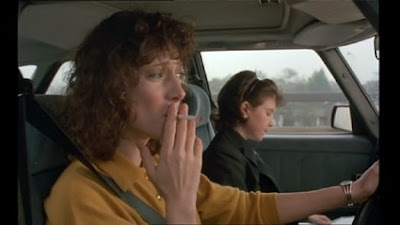 A fun detail that had me sniggering is the frequent smoking in Bernard Rose movies, especially his horror flicks. There are two scenes in Paperhouse where Glenne Headly’s Mother character smokes within inches of her child. Once in a car driving her home from school and once on the train when they go on holiday. It’s the same in Candyman that Rose directed in 1992, there’s loads of smoking going on in that movie and almost every second scene has Virginia Madsen lighting up or butting out her smokes. You don’t see that much anymore in movies. I would guess where it twenty years ago meant nothing; it could be seen as a burdening trait to characters in a more modern storytelling. A parent ignorant of the dangers of secondhand smoke. That’s possibly something to jot down in a note book and bring out at a valuable moment of writing.
A fun detail that had me sniggering is the frequent smoking in Bernard Rose movies, especially his horror flicks. There are two scenes in Paperhouse where Glenne Headly’s Mother character smokes within inches of her child. Once in a car driving her home from school and once on the train when they go on holiday. It’s the same in Candyman that Rose directed in 1992, there’s loads of smoking going on in that movie and almost every second scene has Virginia Madsen lighting up or butting out her smokes. You don’t see that much anymore in movies. I would guess where it twenty years ago meant nothing; it could be seen as a burdening trait to characters in a more modern storytelling. A parent ignorant of the dangers of secondhand smoke. That’s possibly something to jot down in a note book and bring out at a valuable moment of writing.Speaking of writing, Paperhouse is based on Marianne Dreams, a novel by Catherine Storr, who didn't like the ending of the movie either, but rather preferred the TV series Escape into night which aired on ITV during the early seventies and stuck closer to her original story. The screenplay for Paperhouse was written by Matthew Jacobs, who previously had written Mats Helge Olsson's The Ninja Mission from 1984. Jacob's later settled into a nice run of TV shows, writing primarily for The Adventures of Young Indiana Jones series.
Paperhouse is a enjoyable movie, and even though one could ask for more in some areas I still enjoyed it, apart from that ending, which could have been much more effective and shorter. Also I’m not quite content with the final scene. After dragging on for a bit too long, the movie ends abruptly on the cliff after the climax. Perhaps some closing dialogue or an epilogue would have been in place. But after brooding on the movie for a few days and making some sense of the ending I feel that Paperhouse can go back on the shelf and keep the label “A Lost British Gem”
Image:
16x9 Widescreen. No subtitles.
Audio:
Dolby Digital Stereo 2.0
Extras:
Unfortunately nothing more than the theatrical trailer and a few of the adult cast and crew filmographies.
No trailer unfortunately, but here's a short scene with that score by Myer's and Zimmer and some marvelous acting by Burke and Spiers.


